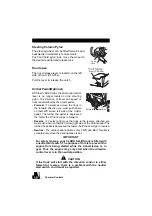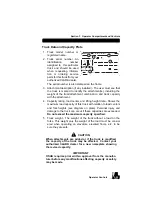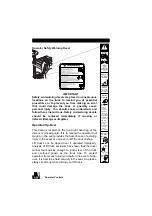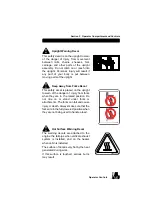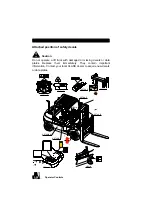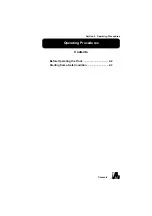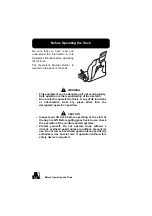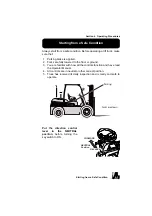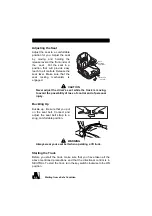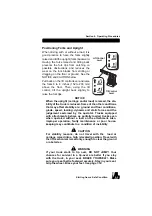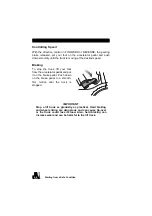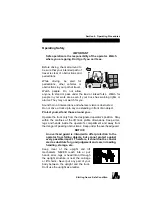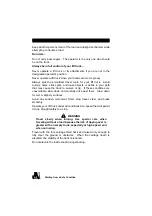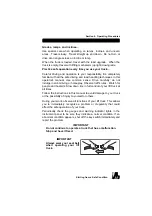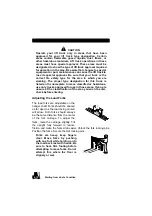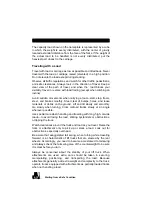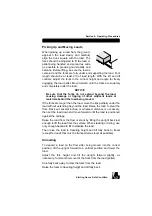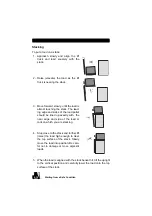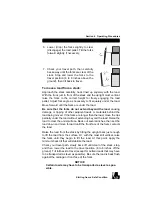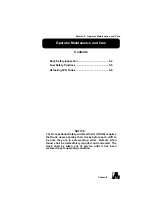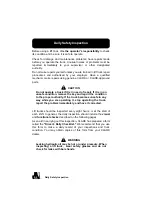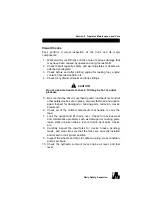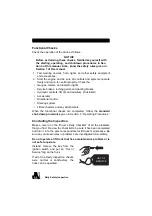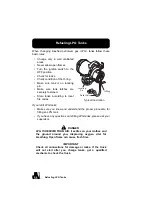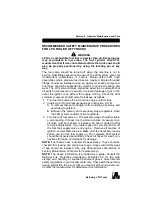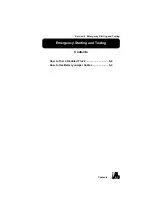
4-10
Starting from a Safe Condition
CAUTION
!
Operate your lift truck only in areas that have been
approved for your lift truck type designation. Certain
areas contain flammable gases, liquids, dust, fibers, or
other hazardous materials. Lift truck operations in these
areas must have special approval. These areas must be
designated to show the type of lift truck approval required
for operation in the area. Be aware that changes to special
equipment or poor maintenance can cause the lift truck to
lose its special approval. Be sure that your truck is the
correct fire safety type for the area in which you are
working. The proper type designation for this truck is
listed on the nameplate. In areas classified as hazardous,
use only trucks approved for use in those areas. If you are
unsure of the classification of the area you wish to enter,
check before entering.
Adjusting the Load Forks
The load forks are adjustable on the
hanger shaft. Forks should be spaced
as far apart as the load being carried
will allow. Both forks should always
be the same distance from the center
of the fork carriage. To adjust the
forks, raise the carriage slightly. Tilt
the upright fully forward to reduce
friction and make the forks slide easier. Unlock the fork locking pins.
Position the forks. Secure the fork locking pins.
Forks are heavy, keep fingers
clear. Move forks by pushing
with one foot while holding on to
the load back rest with hands. Be
sure to have firm footing before
attempting to move forks. Do not
attempt this where the floor is
slippery or wet.
Summary of Contents for C40D
Page 2: ......
Page 6: ...iv ...
Page 16: ...1 4 Seat Belts Seat Belts ALWAYS BUCKLE UP Seat belts can reduce injuries ...
Page 30: ......
Page 90: ......
Page 109: ...PM Report Form 7 13 Section 7 Planned Maintenance and Lubrication ...
Page 126: ......
Page 136: ......

